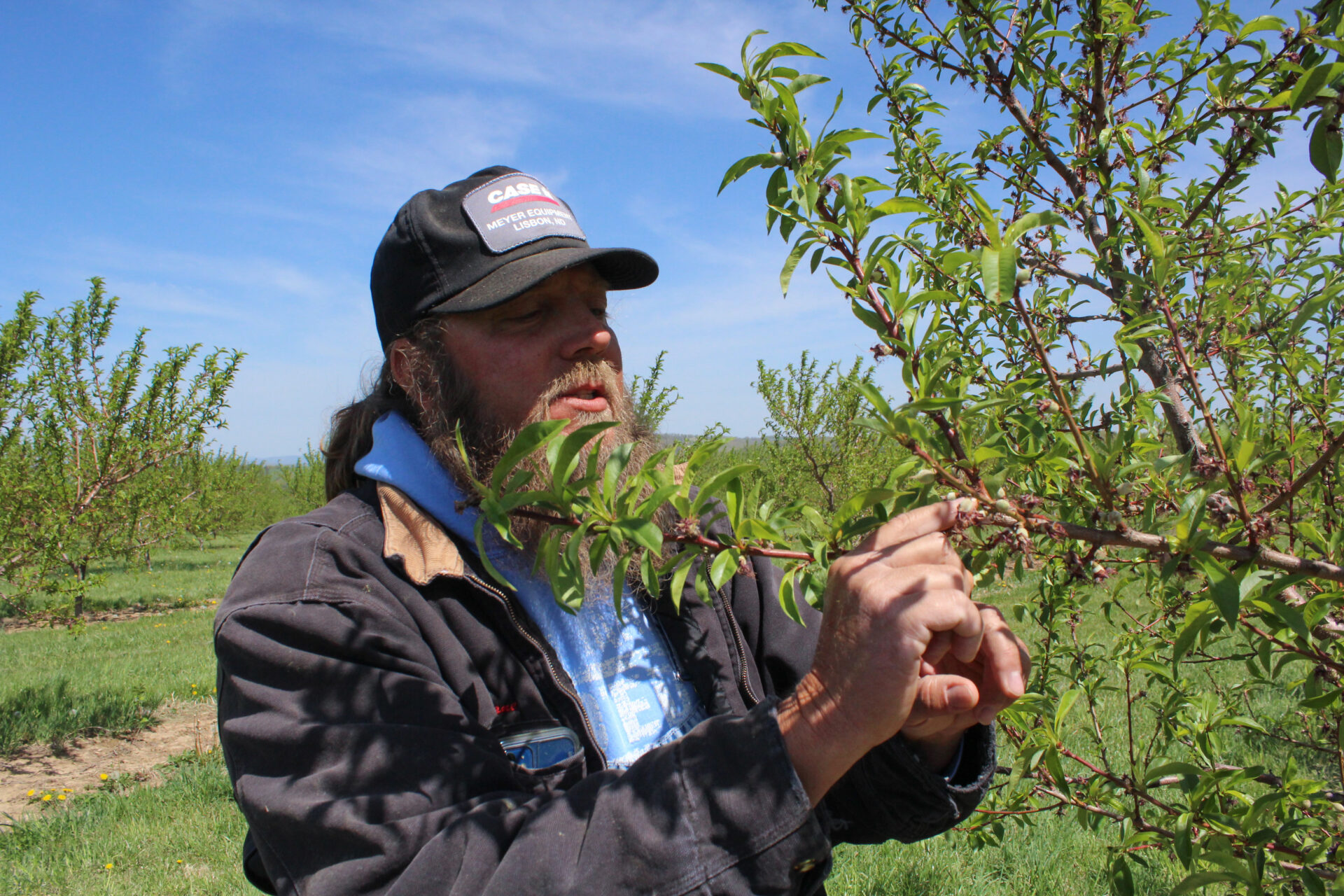This past winter was unseasonably mild. That’s put some of the state’s fruit farmers in an unexpectedly precarious position as plants produce before the threat of frost is gone.
Garry Shanholtz has been growing apple, peach and cherry trees in his Hampshire County Orchard for close to 60 years, part of a rich agricultural tradition in the state.
“Most people don’t realize what history West Virginia has in the fruit business,” he said. “Of course, the Golden Delicious apple was found in Clay County, and it’s the most widely planted apple in the world. It’s cross bred with a lot of other apples.”
Garry said his father was also in agriculture, mostly timber and cattle, but bought land with a small orchard in the 1950s.
“I decided to go with the orchard because them trees go to sleep in the wintertime, and I take a vacation,” he said. “You don’t have to get up to feed the cattle and so on, so forth. But it’s been a great life.”
But that downtime is starting to get shorter as temperatures warm up. This past winter wasn’t the warmest on record, but according to the National Oceanographic and Atmospheric Administration, it did rank in the top 20 of all time. Garry’s son Kane, who helps him manage the orchard, said farmers are taking notice.
“I was at one of my farm meetings, and there was a guy there talking about the weather,” Kane said. “And he said, ‘It seems like it’s staying warmer later. And then it’s not staying as cool as long as it should, then it warms up.’ Then that’s what happens, everything pops out ahead.”
Almost three weeks ahead by the Shanholtz’s estimation.
During a visit to the orchard in mid April, the pink peach blossoms that would normally be peaking, had already come and gone. The apple orchards were wearing their white blooms, which used to not arrive until the first week of May.
“The Apple Blossom Festival in Winchester has always been the first weekend in May,” Garry said. “Well, the apple blossoms are almost gone.”
In most lines of work, being ahead of schedule is usually a good thing. But for the Shanholtz and their orchard, early fruiting puts their production at risk. A freeze right now could mean a total write-off of their crop for the year.
“Right here are some peaches coming out of the shuck,” Kane said, indicating budding fruit on the branch. “So now they’re really vulnerable. If we don’t have a freeze, you know, we’re gonna have a good crop. I want it to stay warm to get through this bloom period on the apples in it, get it behind us.”
Threats from a changing climate don’t stop there. Beyond the threat of a freeze killing off early fruit, plants like peaches, apples and cherries – all of which the Shanholtz’s grow – need what are called “chill hours” to produce.
“The sap goes down in the fall of the year on peaches and apples and everything, and then everything stays asleep for a certain amount of hours,” Garry said. “It varies on different crops, different apples, different peaches, then once that time’s up if you get warm weather, that’s when sort of everything starts coming. And that’s been happening, everything has been coming a little sooner.”
Garry said even in a warm winter like the one we just had, West Virginia still gets plenty of chill hours to accommodate his plants, but it is starting to become a problem farther south.
“They actually plant peaches that take less hours, but we’re not close to that yet,” he said. “We’ve had enough cold weather for him to go into dormant back out. It’s just that they’re coming out of dormancy sooner.”
Dee Singh-Knights, an extension specialist of agribusiness economics and management with the WVU Extension Service, said that in economics, climate and weather fluctuations fall into the category of “wicked problems.”
“By wicked, what we mean is that it’s generally not well understood, because the data is still emerging,” she said. “It does pose significant economic burdens. We’re talking about food that is the underpinning of our society.”
The Extension Service aims to provide producers like the Shanholtz’s with both long and short-term solutions, but Singh-Knights said that has to happen on a case-by-case basis.
“I like to say, ‘When you’re seeing one farm in West Virginia, you’ve seen one farm in West Virginia,'” she said. “That simply means that our farm operators, in terms of the vulnerabilities, every single farm operation will have different vulnerabilities on a very individual level.”
That variety is its own sort of insurance, because Singh-Knights said food systems that will stand up to a changing environment will have to be varied in place and production.
“Whereas we do want to have a very resilient local food system, where our small farm families continue to be profitable, to be sustainable, resilience really is making sure that we’re not putting all our eggs in one basket,” Singh-Knights said.
Peach producers in warmer, southern regions can still provide fruit if a freeze knocks out a local crop, and vice versa if winters down south prove too mild for a good production.
“It’s about deliberate planning,” Singh-Knights said. “It’s about deliberately understanding what you’re doing in the face of climate change and making these changes so that you remain profitable.”
For now, however, Kane said all he can do is work with what’s in front of him.
“Years ago, we used to stress over the weather. But you know, when you’ve been in it as long as we have, it is what it is,” he said. “We can’t control it. So we got to take what Mother Nature gives us, and sometimes it’s good, sometimes it’s bad, you know?”
